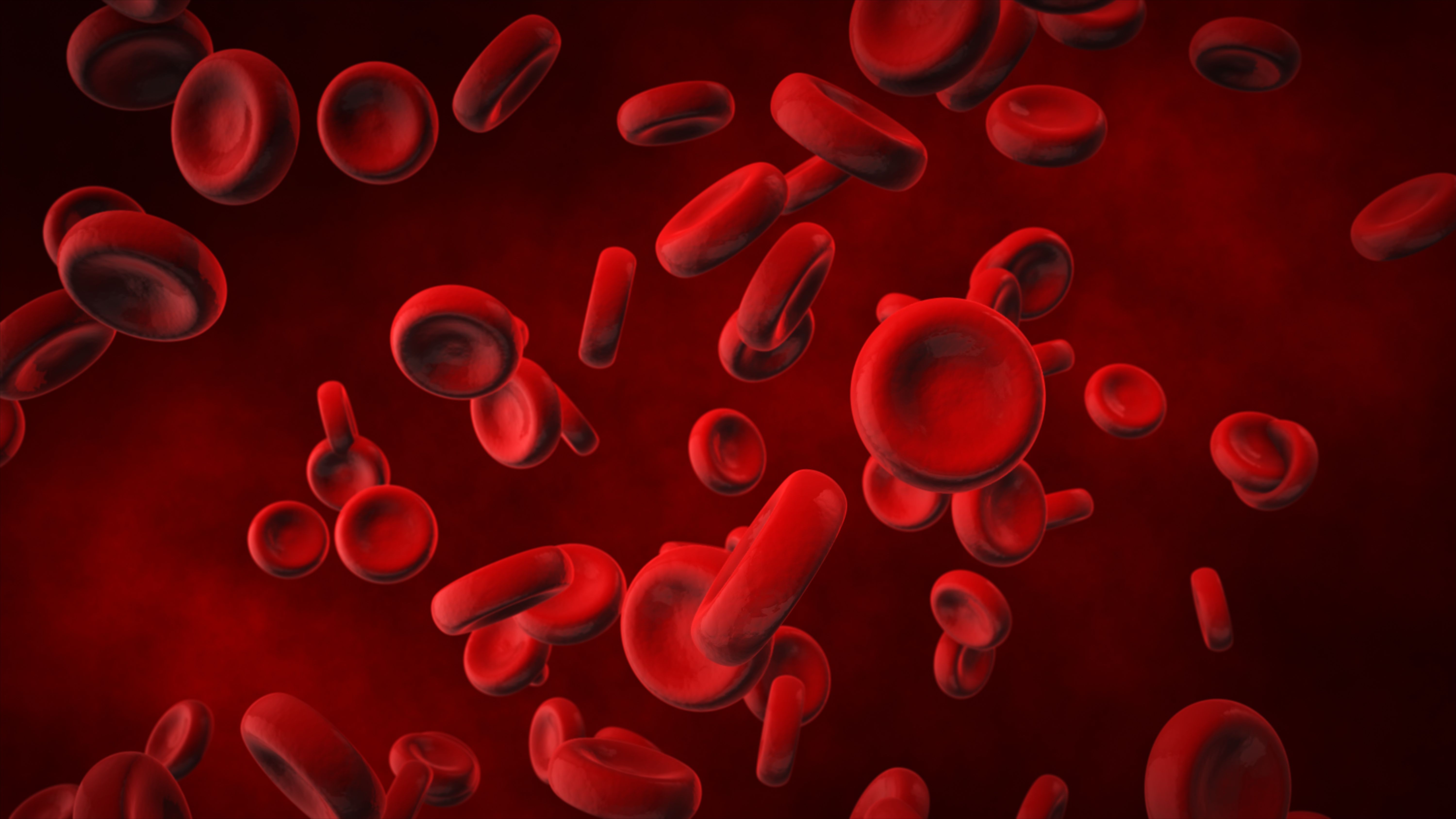Ibrutinib/Venetoclax Less Effective Than FCR in Reducing MRD in CLL
Preliminary results from the phase 2 ERADIC trial signal promise for ibrutinib plus venetoclax for the treatment of chronic lymphocytic leukemia.

Ibrutinib (Imbruvica) and venetoclax (Venclexta) has not demonstrated decreased minimum residual disease (MRD) while showing comparable toxicity to the standard of care treatment for patients with previously untreated chronic lymphocytic lymphoma (CLL), according to preliminary results presented at the 2021 American Society of Hematology Annual Meeting & Exposition.1
The randomized phase 2 ERADIC trial (NCT04010968), a French Innovative Leukemia Organization (FILO) trial presented by co-principal investigator Anne-Sophie Michallet, MD, of the department of hematology at the Centre Léon Bérard, compared ibrutinib plus venetoclax with the standard FCR regimen (fludarabine, cyclophosphamide, and rituximab [Rituxan]) in medically fit, previously untreated patients with intermediate-risk CLL. These patients had either unmutated IGHV, 11q deletion, or complex karyotype in the absence of TP53 normality.
The investigators’ goal was to evaluate whether ibrutinib in combination with venetoclax, a BCL2 inhibitor, could lead to a lower MRD. However, at the 9-month interim follow-up, FCR showed a greater rate of reduced MRD in patients than ibrutinib/venetoclax. This result may not be indicative of the full trial length of 27 months.
Participants in the study were randomized 1:1 between receiving 6 cycles of FCR versus ibrutinib 420 mg and 400 mg venetoclax each daily, with 60 patients in each arm. Patients in the ibrutinib/venetoclax arm received ibrutinib monotherapy as a lead-in for the first 3 months. Treatment was either continued or discontinued after the results of bone marrow (BM) MRD assessment using flow cytometry at 9 months from the start of treatment. If BM MRD was below 0.01%, patients would continue treatment for 6 more months, for a total of 15 months. If BM MRD was above 0.01%, treatment would continue for 18 months instead, for a total of 27 months.
The trial’s primary end point in both arms was the percentage of patients at 27 months with BM MRD of 0.01%, while secondary end points included progression-free survival, overall survival, complete response (CR) rate at 27 months, and safety of both arms.
According to Michallet, at the ninth month of treatment, patients received evaluations including CT scans, bone marrow biopsies, and both peripheral blood (PB) MRD and BM MRD assessment. The interim results she presented had a median follow-up of 11 months (95% CI, 2.9-19.8).
Of the 120 patients, 103 had reached 9 months of treatment at the data cut-off. There were 56 evaluable patients in the FCR arm. One of the 4 who were not evaluable experienced early disease progression. In this arm, 90% of patients received the full 6 cycles of FCR.
There were 47 evaluable patients in the ibrutinib/venetoclax arm. Ibrutinib was discontinued for 4 patients permanently and 3 patients stopped but were able to resume at a lower dose, while 4 patients discontinued taking venetoclax permanently due to digestive toxicities and grade 4 neutropenia.
Of the evaluable patients, 71% in the FCR arm and 42% of patients in the ibrutinib/venetoclax arm achieved BM MRD of below 0.01% at 9 months. In the FCR arm, 75.5% had PB MRD of below 0.01% compared with 48% in the ibrutinib/venetoclax arm.
This was also consistent for more detailed analysis of the sensitivity level of the MRD. “When we look at the sensitivity of the MRD responses, the result is also very clear, with a higher rate and higher depth of minimum residual disease undetectable in the blood and the marrow for the FCR compared to the IV [ibrutinib/venetoclax],” Michallet stated in her presentation.
In the FCR arm, 50% had a CR and 48% had a partial response (PR), while in the ibrutinib/venetoclax arm, 64% had a CR and 32% had a PR.
There was a wide range of serious adverse events (SAEs) in both arms; 31 patients were evaluated for SAEs in the FCR arm and 25 patients in the ibrutinib/venetoclax arm. SAEs included tumor lysis syndrome, infections, neutropenia, and digestive issues. Notably, investigators observed more frequent hematological and infectious toxicities in the FCR arm. However, they observed 8 cardiovascular disorders in the ibrutinib/venetoclax arm, including 3 cases of atrial fibrillation and 2 sudden deaths. According to Michallet, the patients who died had no known cardiovascular issues in the past and had no predictive factors for cardiovascular risk.
While the ibrutinib/venetoclax arm showed significantly lower BM MRD, this could change as the trial period continues. “The BM MRD rate should improve after longer exposure to the IV combination, and the analysis of the primary end point at 27 months will be decisive in determining the best therapeutic strategy,” Michallet concluded.
Reference:
1. Michallet AS, Quinquenel A, Letestu R, et al. Preliminary results of the Filo phase 2 trial for untreated fit patients with intermediate risk chronic lymphocytic leukemia comparing ibrutinib plus venetoclax (IV) versus FCR. Presented at: 2021 American Society of Hematology Annual Meeting & Exposition; December 11-14, 2021; Atlanta, GA. Abstract 641.